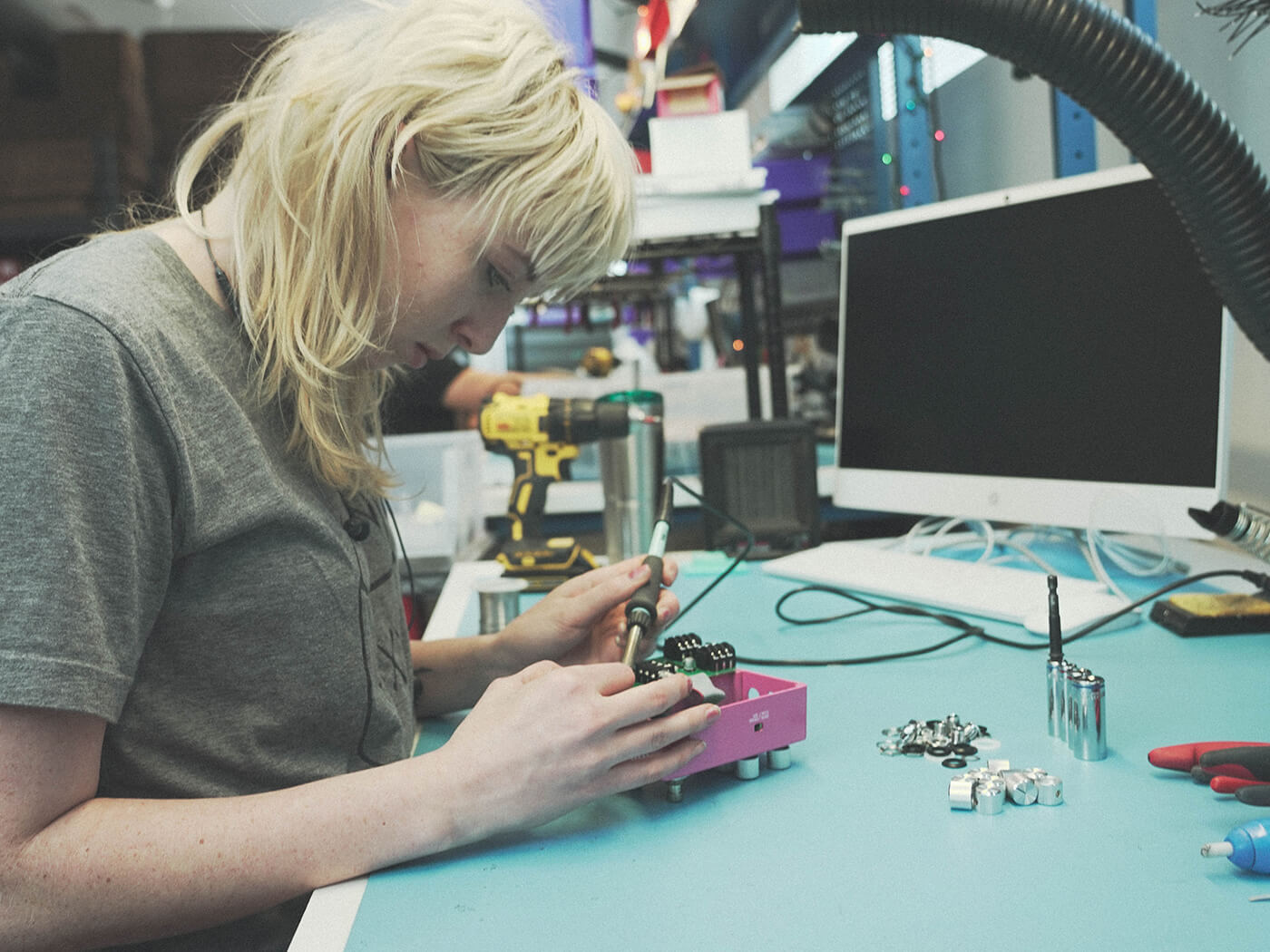Related Tags
How Josh Scott built JHS Pedals from the ground up: “It’s a total accident that was incredibly hard to do”
While working as a gigging guitarist throughout the southeastern United States, Josh Scott’s love for the guitar bloomed into a talent for electronics and design that he barely knew he possessed.
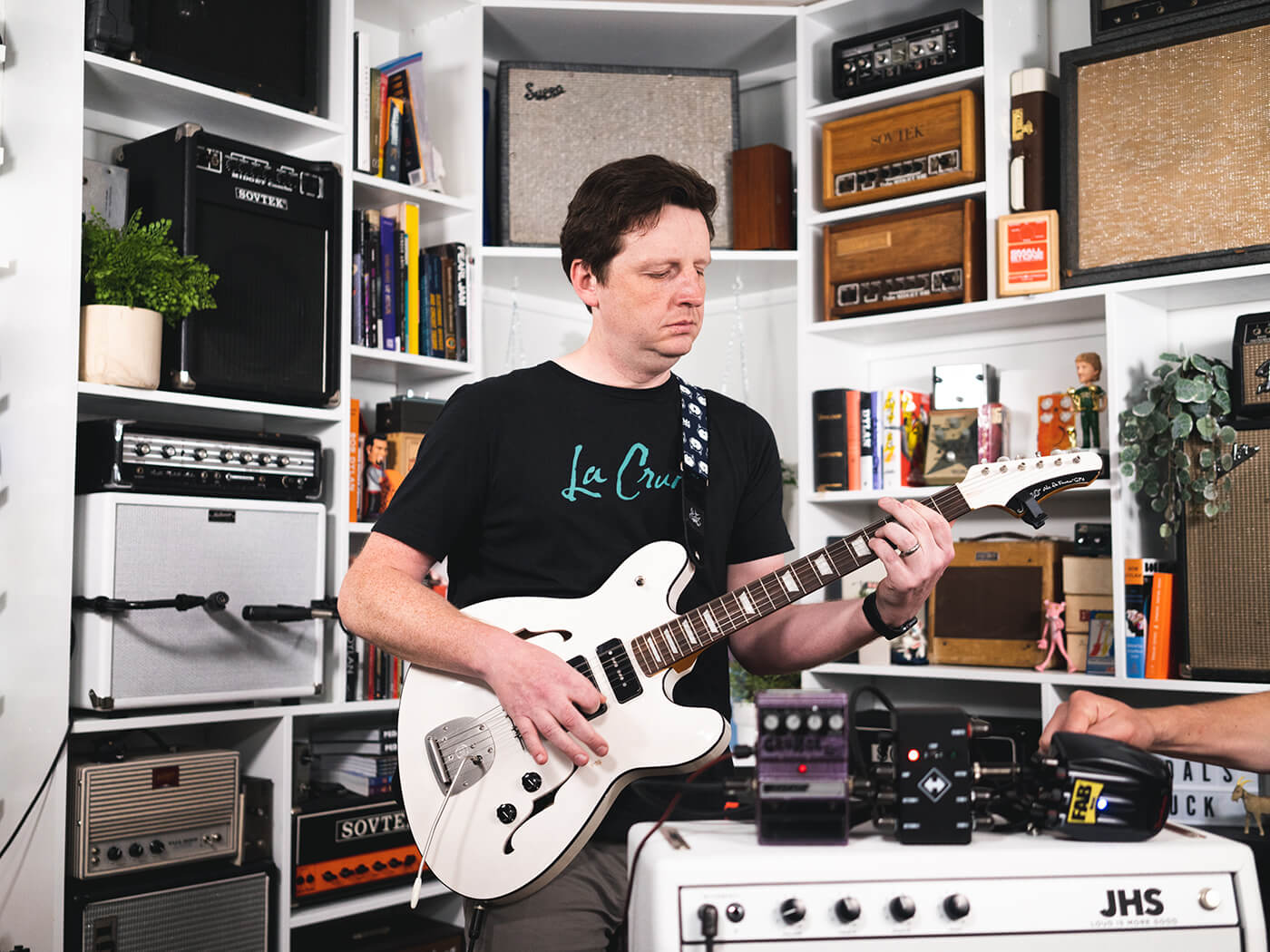
“It’s almost like Mars,” says Josh Scott, founder and proprietor of JHS Pedals, of his rural childhood in northwest Alabama. “If you’re familiar with that life, it’s a fun, awesome life, but you live out on land by yourself and there’s not a lot else to do, so you develop hobbies. My dad raised horses; I was a total basketball nut.”
To put a name to it, ‘out’ meant Belgreen, Alabama, a small farm town about 30 miles south of Muscle Shoals. This was definitive ‘country life,’ where Scott attended the same school from age five to eighteen, and graduated with a class of 30 students.
“If you’re an introvert like me,” he elaborates, “you just kind of pick a thing, and you have blinders on and do it. I’m 6’6” tall, and I loved basketball. I grew up watching the [Boston] Celtics with my dad – Larry Bird and all that – and that’s what I thought I was going to do.”
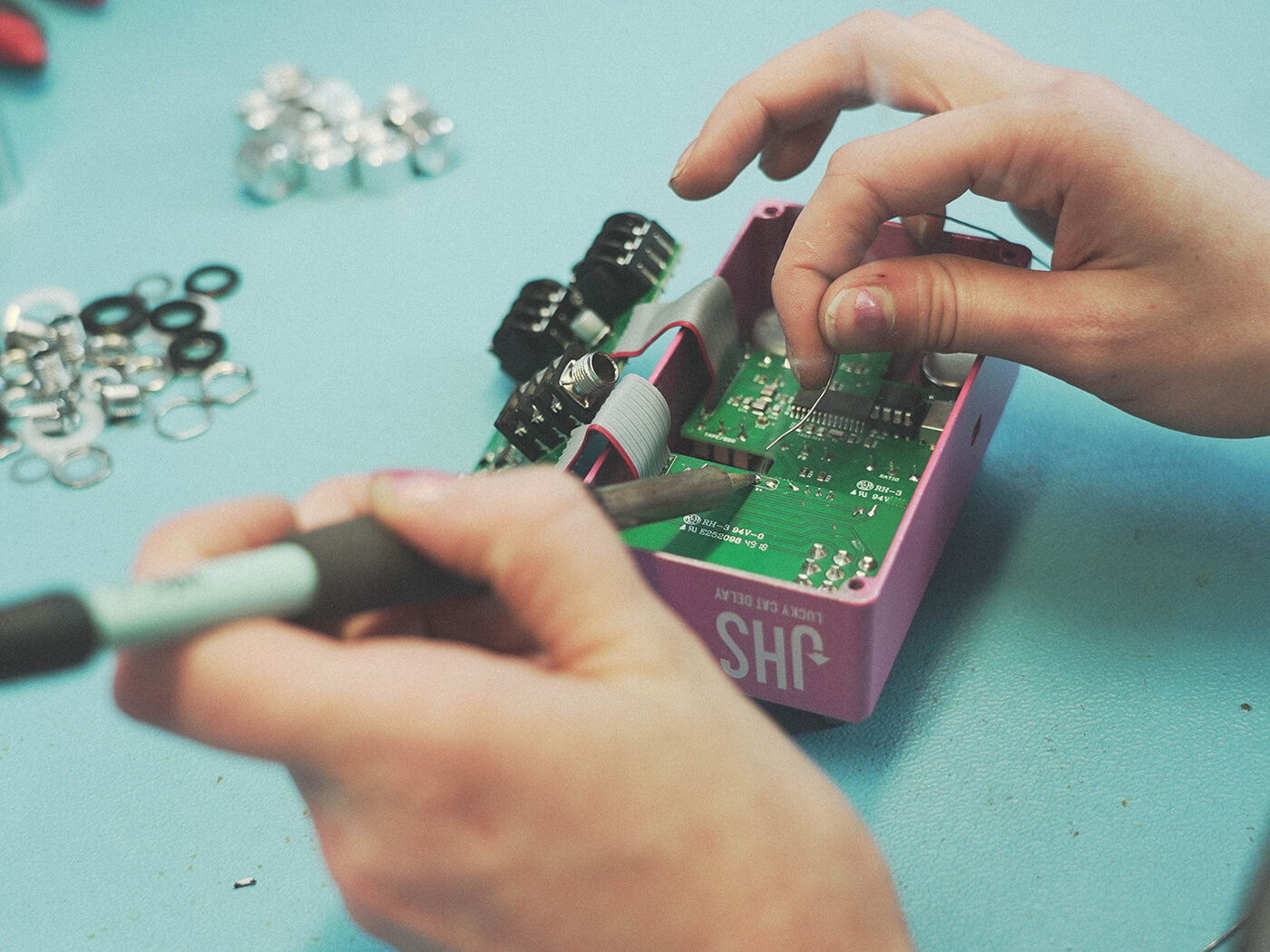
Ah, but how many youthful dreams of sporting prowess have been pierced by the discovery of that hormone-addled teen corruptor, rock ’n’ roll?
Coming alive
And so often the dream thief is let in through the window by a worldly older sibling. In Scott’s case, it was an older brother who lived in ‘town,’ such as it was, with whom he’d often stay during the summers.
“I’d be sitting on the floor,” Scott tells us, “and he had this huge collection of cassette tapes, right as CDs were becoming a thing, so he had the remnants of being an 80s kid with all the cassettes, just an insane collection. I think that’s where I got my pedal-collecting mentality from. But Pearl Jam’s Ten was sitting on a pile, with Depeche Mode, The Cure, all the stuff he listened to, and I put it in, hit ‘play’, and it was the song Alive. And I just remember loving the sound of the guitar… and then the solo part, which later, in hindsight, it’s like Jimi Hendrix meets grunge, you know, the Mike McCready thing.

“I went home and I was like, ‘Mom, I want to get a guitar!’ We’d get all our groceries at Sam’s Club [bulk-buy outlet], and we got a guitar there. It was a cherry red Synsonics Stratocaster copy, with a tiny 1×8 solid-state amp, one of those ‘if it rains on it, it evaporates’ kind of things. So that sat in my room for a while, and I didn’t know how to tune it, but I really got into music: Pearl Jam, Soundgarden’s Superunknown, Everclear, Nirvana – and Kurt Cobain had already died so I was late to the party. And I went backwards at that point. I remember getting The Cream Of Eric Clapton, and went way back and got into Hendrix.
“I remember I thought I had learned Purple Haze, or some fashion of it, and went and showed my mom, and she was like [adopts indulgent mum voice], ‘That’s really nice, Josh.’ But yeah, that’s kind of how it started. Hacking away, watching MTV videos and trying to watch their fingers.”
It’s just electronics
By his later high-school years, Scott became proficient enough on the guitar to join an established band that was playing throughout the region, and it started to look like a career.
“We made a lot of money,” he tells us. “We played all the clubs in the Muscle Shoals area. And as you know, Muscle Shoals is where all the historic Dylan records, Rolling Stones, Lynyrd Skynyrd, Allman Brothers and others were made, so there was a lot of music in that area. We would play the dive bars, talent competitions, and all that stuff.”
The coverband gig graduated to songwriting, engineering, and some session work – “playing guitar for a couple of other bands that needed people, playing jingles, just learning what the studio was like” – which segued to some engineering and producing, and a growing fascination with audio electronics, and as he puts it, “how sound worked.”

“I fixed and modified a Boss pedal,” says Scott, “and at this time I used Robert Keeley’s modified Blues Driver next to a stock Blues Driver – I would have used two Keeleys but I probably couldn’t afford it – and when I fixed that stock one I was like, ‘Why does Robert’s sound different?’ So, I took them apart, and just by bare bones process of elimination I figured out what did what.
“I started tinkering, and I would break things, then go to Radio Shack or get on the internet and I’d find, you know, ‘DIY Fuzz Face’ or whatever. I built a fuzz pedal, I built a booster, and keep modding stuff and eventually understanding that if I change this capacitor it’s going to affect the bass response, or these diodes are little distortion monsters and you can change them out and the pedal will clip differently – still not learning anything about electronics, but my ear was learning what things did, and that’s really all you need to do.”

For Scott, as for so many budding pedal and amp makers, the discovery of the ‘magic roadmap’ that widely available schematics presented helped to flip the big switch.
“It’s like a treasure map,” he says. “It’s something where you go, ‘Man, I actually did that!’ And it wasn’t witchcraft, you just figure it out and do it. You don’t have to be Tesla, it’s just electronics.”
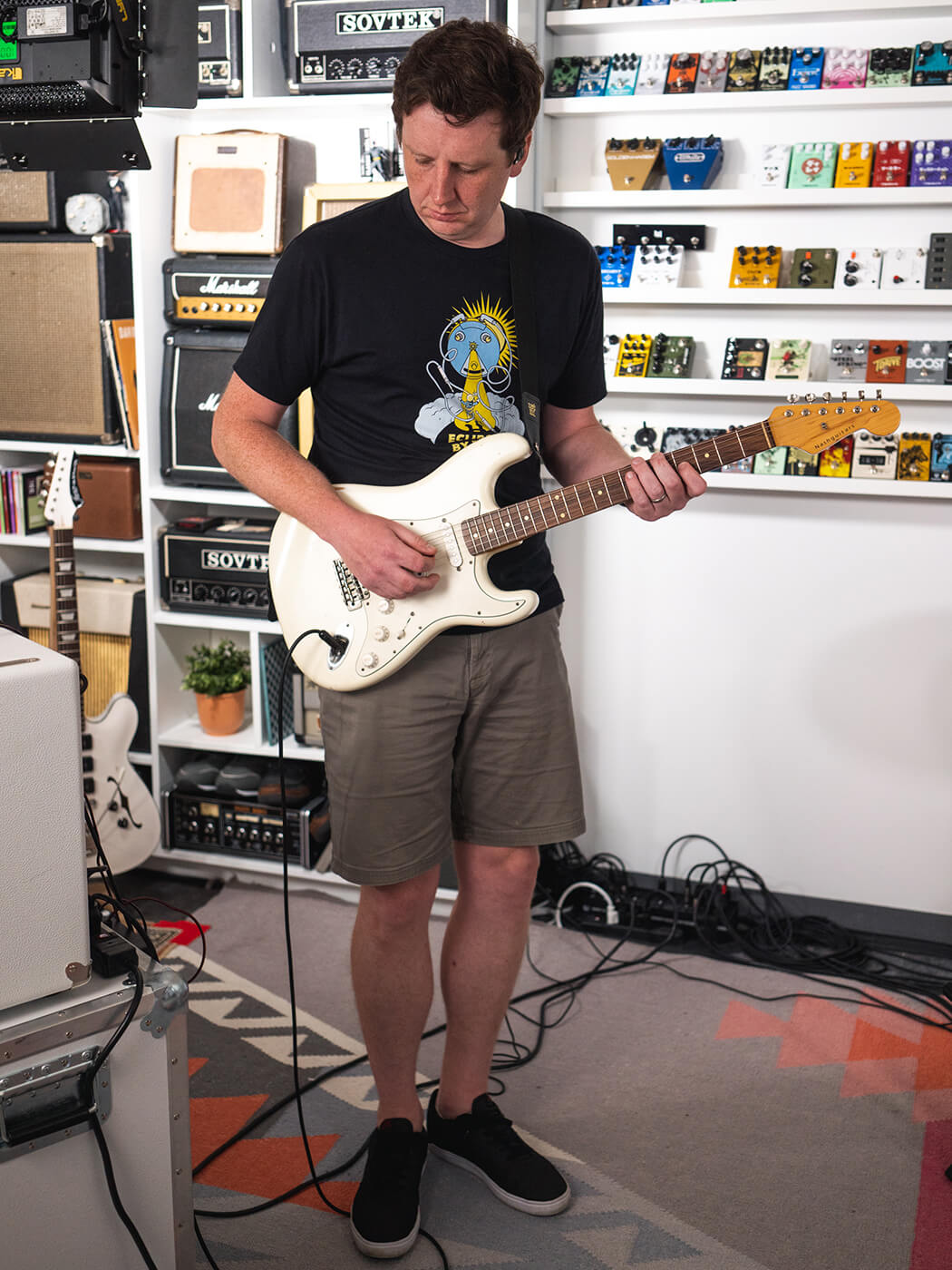
I can totally do this
While the pedal explorations had really begun as a hobby, the increasing domesticity of Scott’s life began to urge some way to make a living other than the constant gigging and studio work. Scott and his wife married in 2003, and by 2007 they had a baby on the way. The pedal modifications had become a decently profitable sideline by this time and, if not for the inherent risk in any small business venture, looked more and more like they might provide the means of a steady day job.
“My wife and I had moved to Jackson, Mississippi, by this time,” Scott recalls, “and I would go down to the Guitar Center there and buy Boss pedals and mod them. There was a shop in the Fondren section of Jackson called Fondren Guitars – he’s still there and he has the first pedal I ever built – and I also started selling them on eBay. I made this little green logo, put it on there, and those just kept selling and selling. That’s when I first thought, ‘I’m going to sell these on the side. This will never be a job, that’s absurd. I don’t want it to be. I’m just going to keep playing guitar, doing what I do…’”
But the pedals just wouldn’t stop selling. By 2008 Scott had started developing more original models, pedals that are now the Morning Glory, the Pulp ’N’ Peel compressor, and a pedal called the All American, which was his take on the RAT. Unlike the early modded DS-1s and the like, these were all built from scratch and rubber-stamped with the JHS logo.

“The pivotal moment,” says Scott, “was right when my daughter was born, I remember sitting in the parking lot of a Walgreens, and my wife saw how much I was working on this stuff, probably 25 hours a week working at a little card table, burning holes in it soldering pedals, and I was like, ‘Wow, I’m making decent money!’ So I told her, ‘I’m just going to see how many of these I can sell, say no to some other gigs and stuff.’ She was slightly panicked, but said to me, ‘Do you really think you can make a living and provide?’ And I did not know, but I said in a split second, ‘Absolutely. I can totally do this.’ And, for me, that was the moment where I went all-in.
“It was treacherous! I was working out in this little woodshed. I had moved everything out there, and I would literally work 16, 18 hours a day, nosebleeds from not ventilating solder and stuff. And then when you have a kid you’re like, ‘Oh, crap, I really do have to make this work!’”
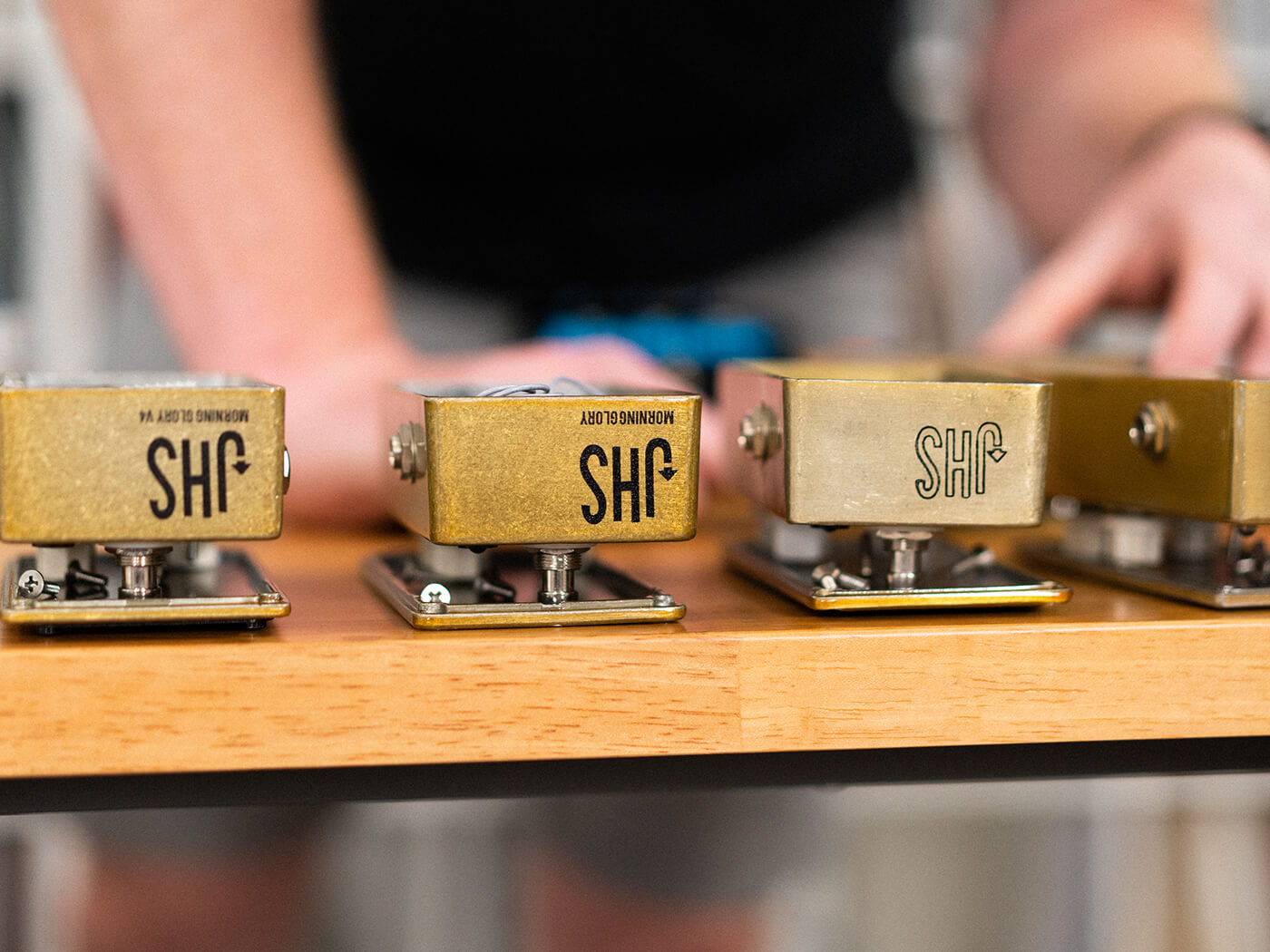
Going to Kansas City
Scott and his burgeoning business moved to Kansas City, Missouri, in 2009. JHS entered a period of rapid growth soon after, and has remained there ever since. Making one hire after another to help meet the demand, Scott now heads an organisation that totals 31 employees.
“It’s a total accident that was incredibly hard to do,” he says, laughing. “I mean, it was hard, and it’s still hard, but there were years when… 2009 through 2013 or so, man, so hard. Because I didn’t know anything about business. My parents grew up in a large farm family, didn’t graduate high school, we don’t sit around the dinner table and dad’s talking about his portfolio, you know. It just wasn’t like that. My dad’s a furniture repair guy, my mom was a cafeteria worker, and they worked really hard. I had no skillset for this, and those first years were brutal.
“A lot of guys ask advice, because somehow we’ve made this name, and I don’t take that lightly, I take it really humbly, because I know how hard it was. And people say, ‘What do I do? How do I make it?’ And I always say, ‘Just stick around.’ You can make great gear, but you’ve got to get beyond that, and it is difficult. And I’ve just been fortunate with a good team that carries all the weight of the things that I’m bad at.”
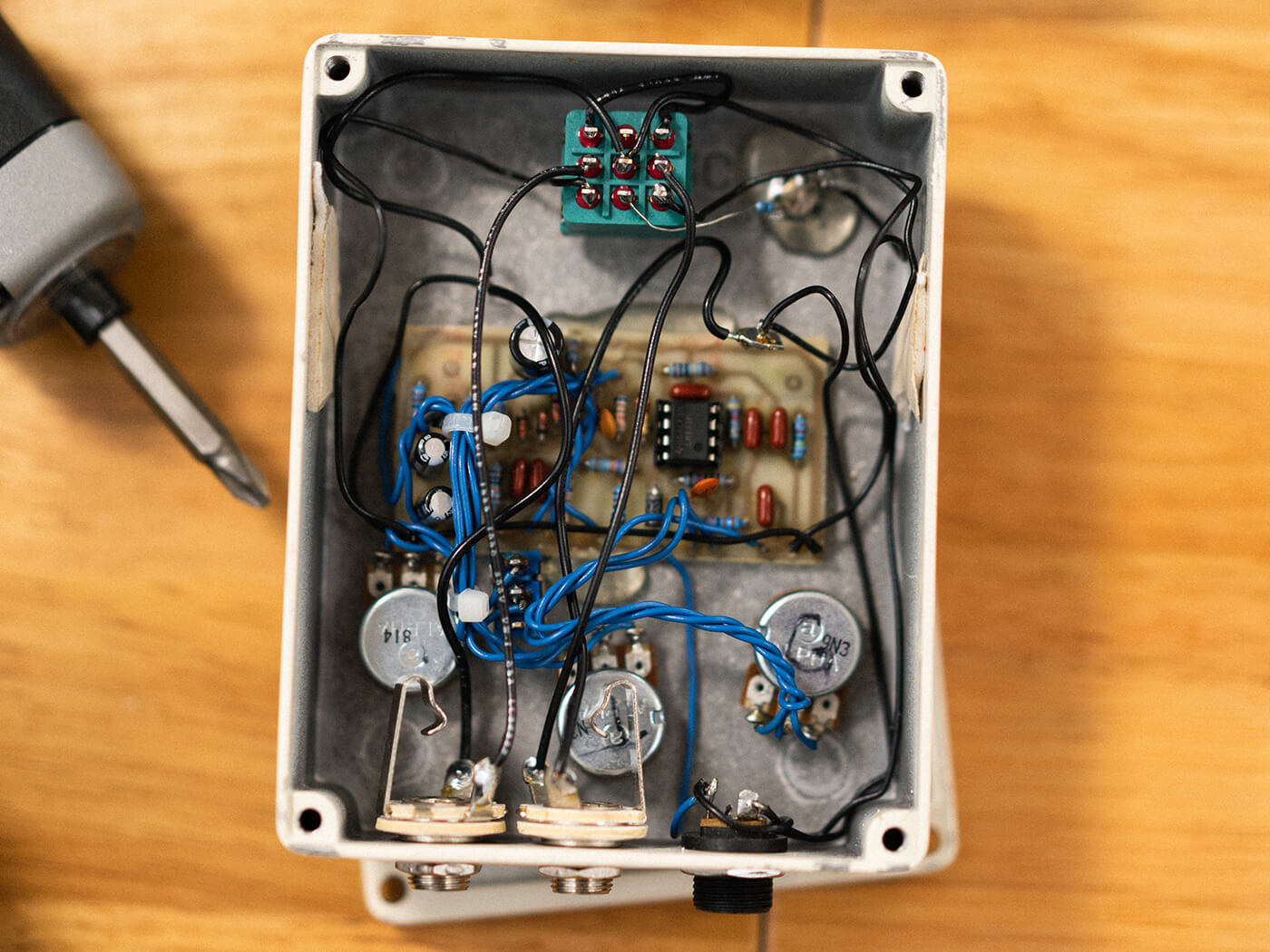
Also carrying the weight, however, has been a compelling line of great-sounding pedals, which has driven JHS’s surprisingly rapid ascendency into the upper echelon of the high-end pedal market (something we might previously have called ‘the boutique market,’ if not for the greater-than-boutique size of the company itself).
Scott credits the Morning Glory with launching the company, but adds that every JHS pedal created could be a Josh Scott signature pedal, since they all stem from effects that he wants to play himself. But when asked to name one pedal that sums up the self-imposed challenge of taking it to the next level once the company’s feet were firmly on the ground, he points immediately to the Colour Box, a 2012 release that combined preamp, EQ, fuzz, overdrive and distortion in one DI-ready stompbox.
“The Colour Box was almost like my Everest,” Scott says. “I remember pitching the idea and telling people what I was working on, and they’d just glaze over. Because we knew it was going to be this $400 pedal, and that’s suicide. But it was our best-selling pedal for several years, sold out all the time, back-ordered hundreds on them. That’s just a crazy. I’m still in awe that it worked.”
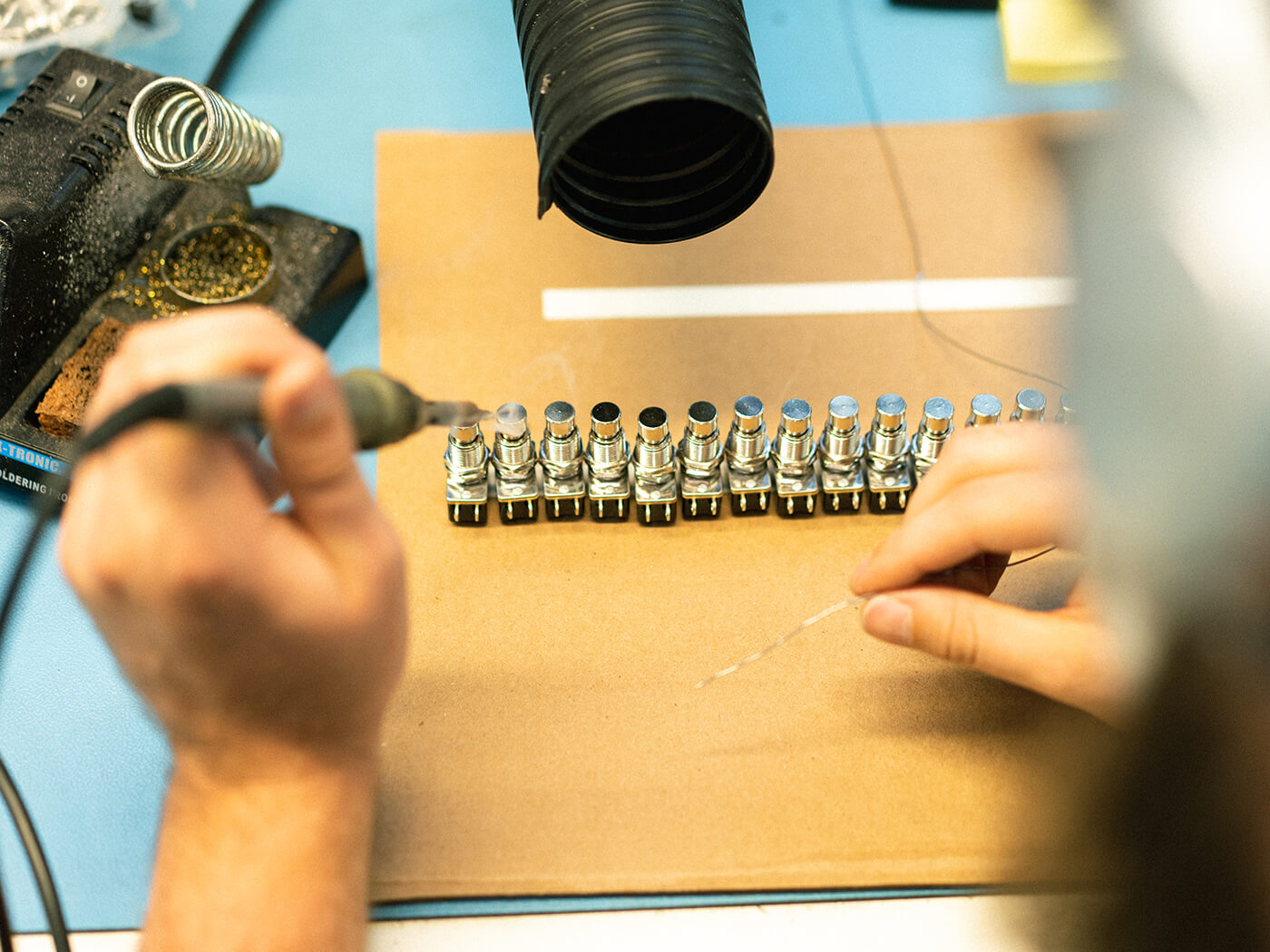
Listed among other successes are the Muffuletta fuzz and Bonsai overdrive, the latter designed after an inside joke of sorts made with fellow pedal designer and manufacturer Brian Wampler, following their joint appearance on a pedal-maker discussion panel. If every respectable maker has their own version of the Tube Screamer, how do you make yet another one? The answer: make nine in one! The Bonsai’s nine-way rotary selector even points to a setting with the Keeley logo, designating a Keeley-modified TS.
The circle turns
Of the more recent JHS offerings, Scott professes a love for the Paul Gilbert Signature distortion, and an appreciation of the experience of working with the man himself. “Man, he’s so redeeming,” he enthuses. “He’s an amazing guy and that pedal was such a blast to work on, and just becoming friends with him… He reminds me to enjoy the guitar. You know how it is, you just get to where you’re like, ‘I play guitar, blah blah,’ it becomes like this extra limb. But he reminds me that, wow, the guitar is fun!”
Plenty of fun was inspired by the intervention of another guitar star – with an assist from a popular British YouTube team – without whom another of JHS’s most enduring and beloved pedals might have bitten the dust. The Angry Charlie, which Scott describes as “my version of what I wish the Marshall Guv’nor had been,” was on the chopping block in 2014, having logged mediocre sales at a time when JHS production was struggling to keep up with all the models in a rapidly growing catalogue.
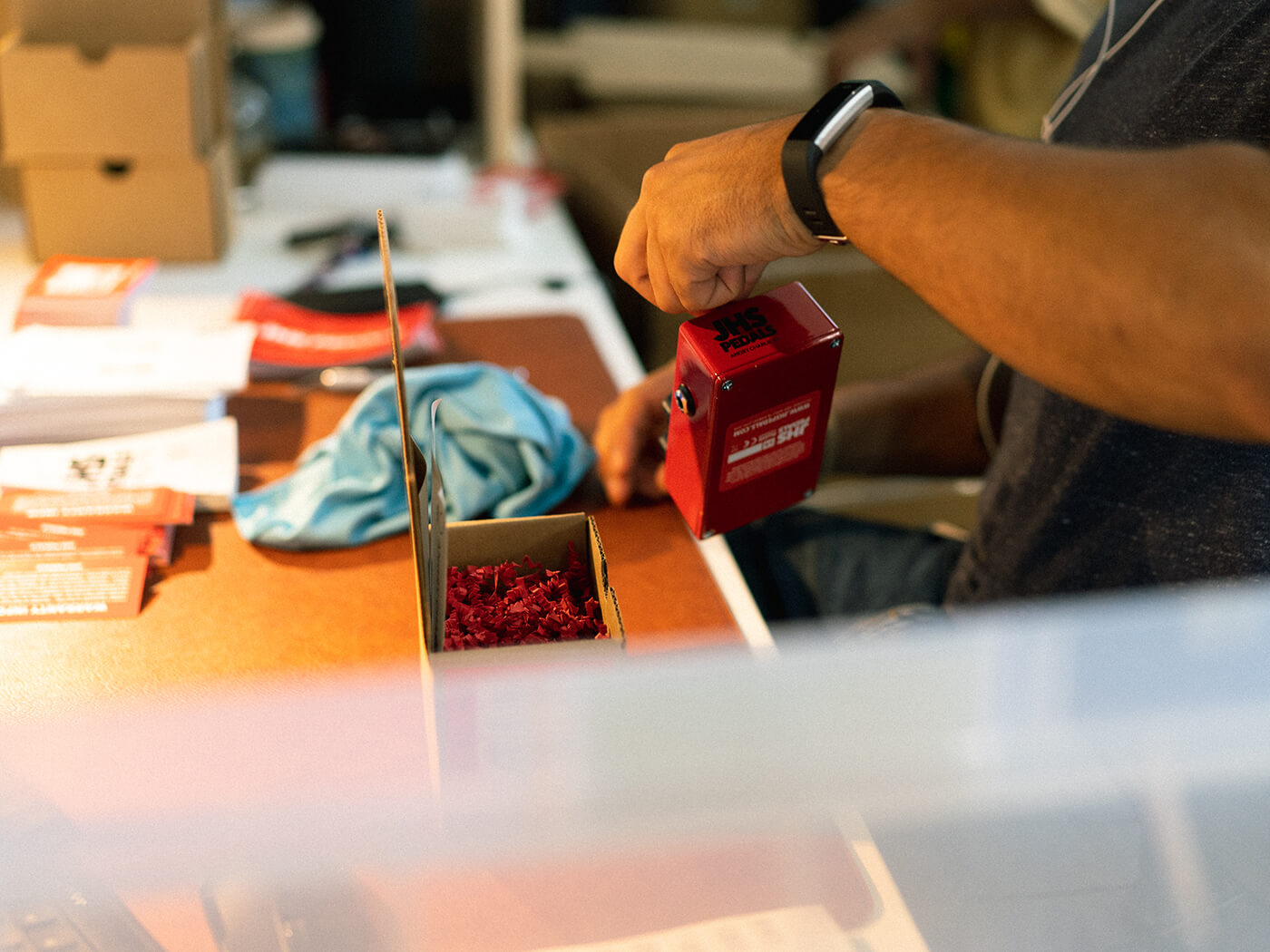
Scott recalls: “Then all of a sudden, I remember coming in one morning and Steve [Offutt], who’s now our general manager, said, ‘Dude, we’re getting gobs of orders for these Angry Charlies!’ I was like, ‘I don’t know, nobody’s ever played these.’ There was no magic; the pedal always sounded great, but it just hadn’t sold well.
“And, basically, I learned that That Pedal Show had shown it, and that they had seen it from Andy Timmons, who had walked into his local guitar shop, the Guitar Sanctuary, and the guy was like, ‘Hey, Andy, you need to use this if you get a clean backline amp when you’re travelling. This is all you need…’ And dude, it just blew up. Because of That Pedal Show, and Dan [Steinhardt] builds the Radiohead rigs and it goes into those… It was like just out-of-nowhere chaos. That’s one of the more unbelievable happenstance things that did happen, and it’s still hard to believe.”
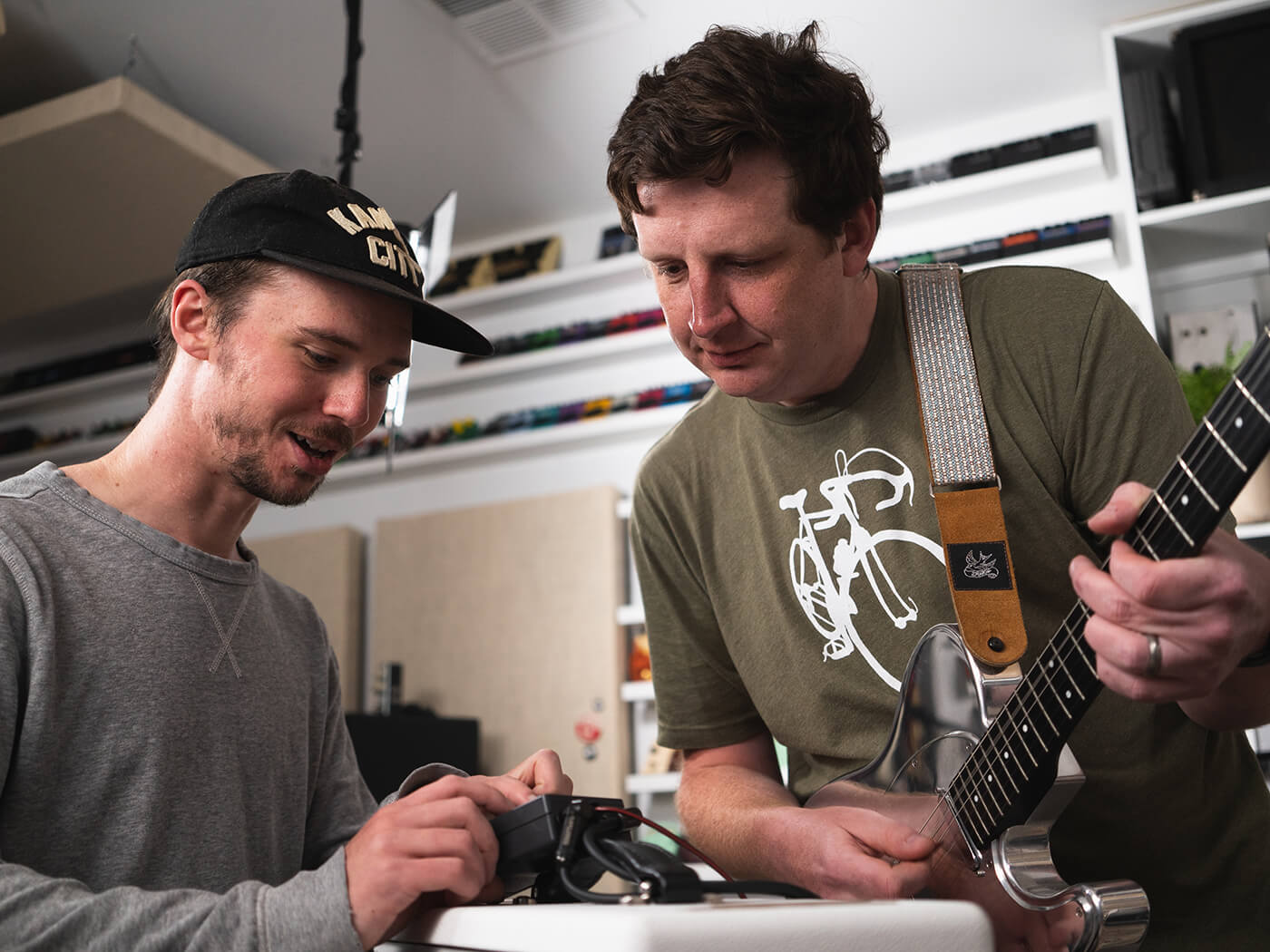
Having progressed through complex pedals like the Colour Box and the multi-mode Bonsai, Scott says he believes the pedal market is cyclical, and simplicity is on the comeback. If the likes of Strymon represent the peak of post-boutique complexity, he sees a wave of renewed desire in basic pedals beginning to crest again.
“We put out this Legends Of Fuzz line,” he says, “and we will close in on 10,000 units in a year. For us that’s like, staggering. And it’s just simple fuzzes… I get asked a lot, ‘Do you think pedals will survive all this amazing modelling stuff?’ And I reply, ‘Absolutely!’ I laugh at myself, because no matter, I have so many guitars, but every time I pick up a Telecaster it’s just, ‘Ahhh…!’ It’s like 1952 man, the thing’s no different. Or I just plug into a Bassman and it’s like, ‘Ah, yeah, there we go.’”
Visit jhspedals.info for more.

